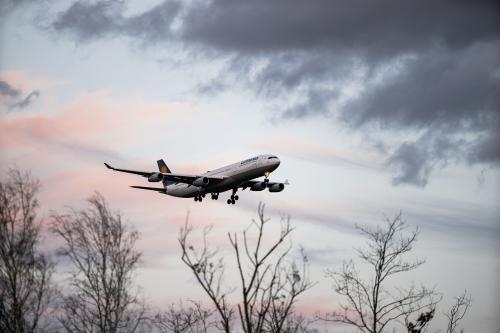Navigating Airport Codes: Deciphering Three-Letter Location Identifiers

In the bustling world of
aviation, where journeys span continents and skies are highways, there exists a
cryptic language that unites travelers and aviation professionals alike:
airport codes. These three-letter combinations adorn boarding passes, luggage
tags, and departure boards, serving as concise identifiers for the multitude of
airports worldwide. Yet, behind their seemingly random assortment of letters
lies a fascinating tapestry of history, geography, and industry conventions.
The Origin Story:
To understand airport codes, we
must journey back to the early days of aviation. As air travel burgeoned in the
1930s, the need for a standardized system to identify airports became apparent.
Initially, airports were denoted by two-letter codes, established by the National Weather Service for use in weather
reports. However, as air traffic expanded globally, these codes proved
insufficient.
In 1947, the International Air Transport Association (IATA)
introduced the three-letter
system we know today. This system allowed for a significantly larger number
of combinations, accommodating the growing network of airports worldwide.
Deciphering the Code:
At first glance, airport codes may seem like an arbitrary jumble of letters, but they often hold significance rooted in geography, history, or language:
- Location-based codes: Many codes derive from the airport's name or its geographical location. For instance, LAX for Los Angeles International Airport or JFK for John F. Kennedy International Airport in New York.
- Historical significance: Some codes reflect historical names or events. Take ORD for Chicago O'Hare International Airport, a nod to its original name, Orchard Field.
- Language and phonetics: In regions where English isn't the primary language, codes may reflect local languages or phonetic sounds. For example, CDG for Paris Charles de Gaulle Airport in France.
- Alphanumeric patterns: Occasionally, codes may follow a specific pattern for organizational purposes. For instance, airports in the United States often start with 'K', such as ATL for Hartsfield-Jackson Atlanta International Airport.
Exceptions and Oddities:
While many airport codes follow
logical patterns, some exceptions and quirks defy easy explanations.
Some codes seem puzzling, such as the code for London's Heathrow Airport, which
is LHR, with no apparent connection to its name or location. Similarly, Denver
International Airport is DEN, seemingly unrelated to its name or history.
Evolution and Adaptation:
As air travel continues to
evolve, so too do airport codes. New airports emerge while existing ones
undergo name changes or expansions. This dynamic nature occasionally leads to
confusion, especially when codes remain unchanged despite significant
alterations to the airport's infrastructure or operations.
Practical Applications:
Beyond their historical and
cultural significance, airport codes serve a vital practical function in modern
air travel. They facilitate seamless communication between airlines, air traffic control,
and passengers, ensuring efficient navigation through the complex web of global
aviation.
Weather Forecasts:
In addition to their symbolic
importance, airport codes play a crucial role in weather forecasting for
aviation. Meteorologists use these codes to provide accurate and timely weather information
for pilots, ensuring safe take-offs, landings, and en-route flights. Weather
forecasts tailored to specific airports help airlines make informed decisions
regarding flight operations, minimizing disruptions and enhancing passenger
safety and comfort.
Conclusion:
Airport codes are more than just
arbitrary combinations of letters; they are symbols of connectivity, history,
and human ingenuity. From the bustling hubs of major metropolises to the remote
airstrips of distant islands, these three-letter identifiers serve as beacons
in the sky, guiding travelers on their journeys across the world.
So, the next time you glance at
your boarding pass or gaze up at the departure board, take a moment to
appreciate the rich tapestry of stories woven into those seemingly random
letters - the hidden language of the skies, guiding not just flights but also
weather forecasts and the safety of air travel.
Post Your Ad Here
Comments